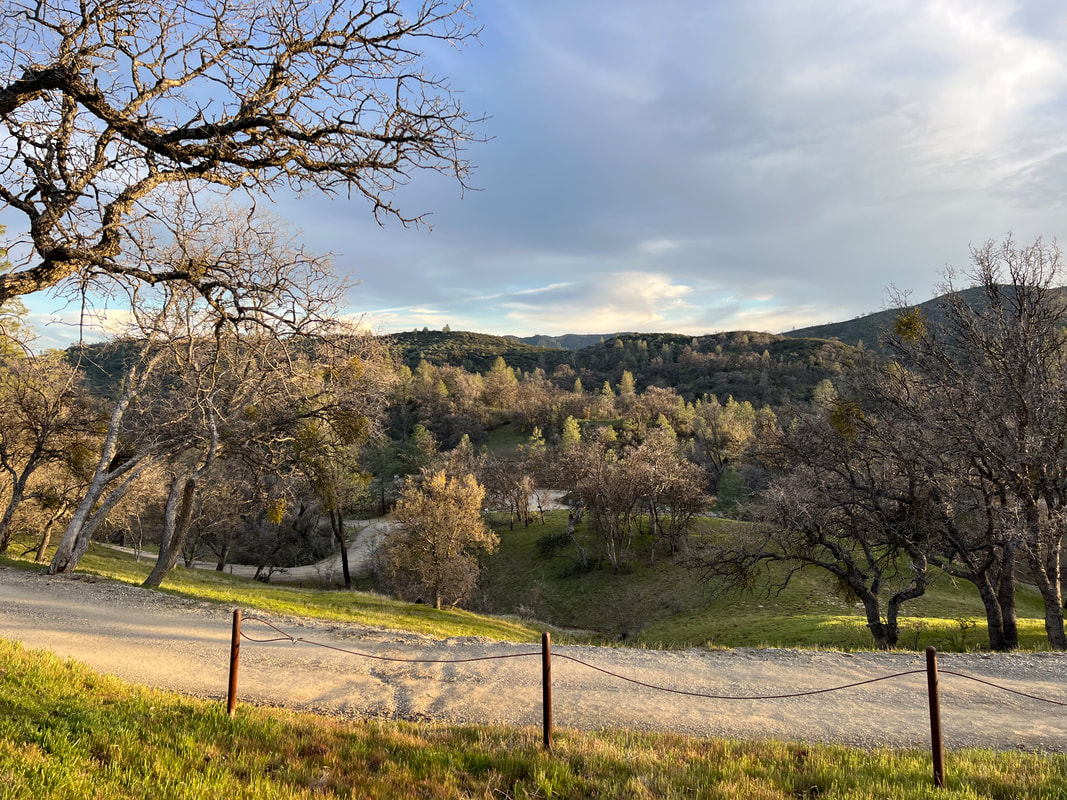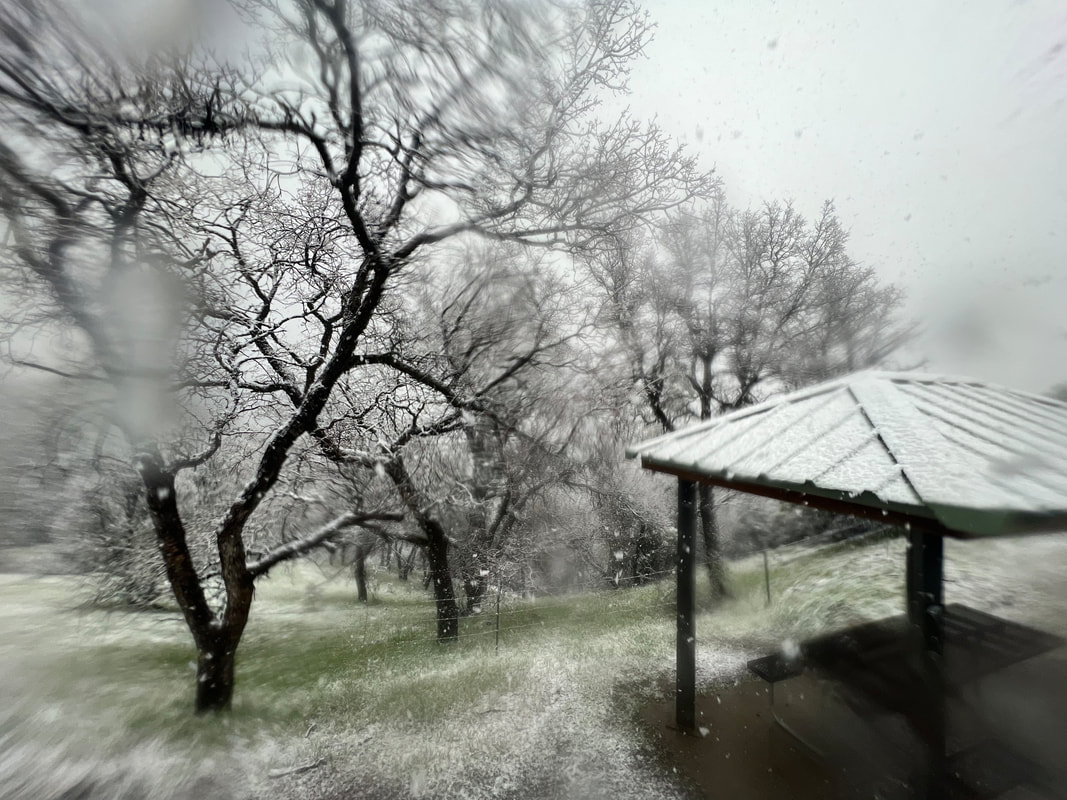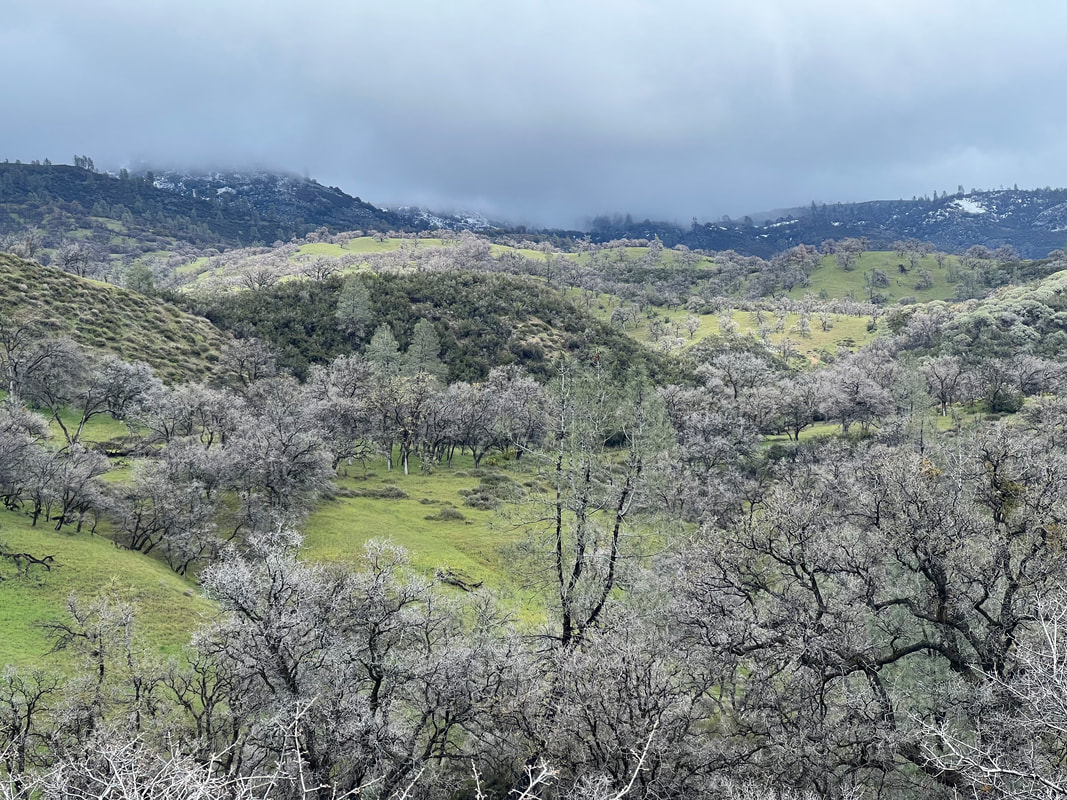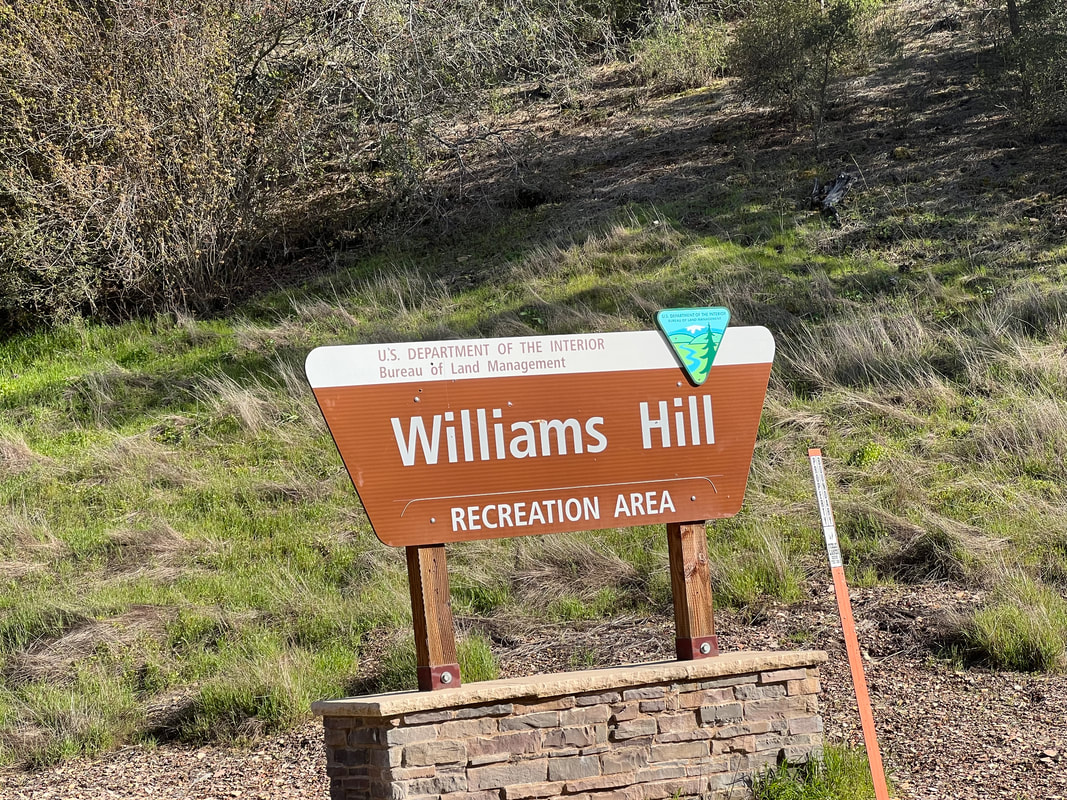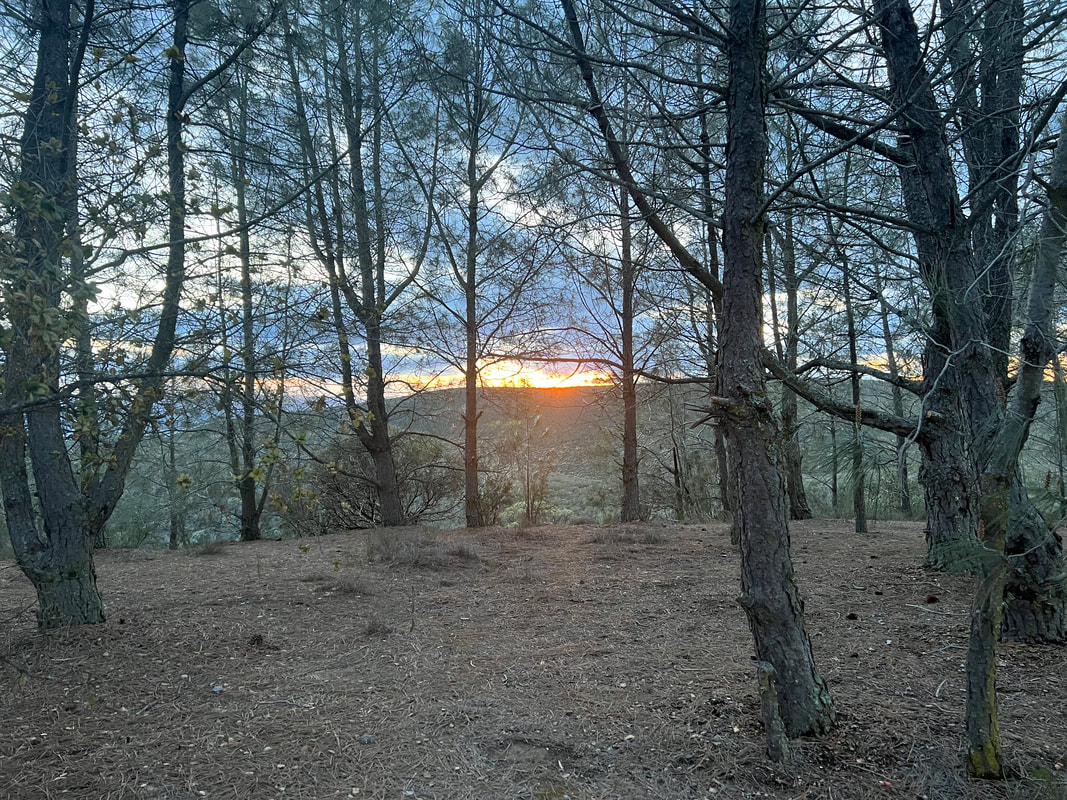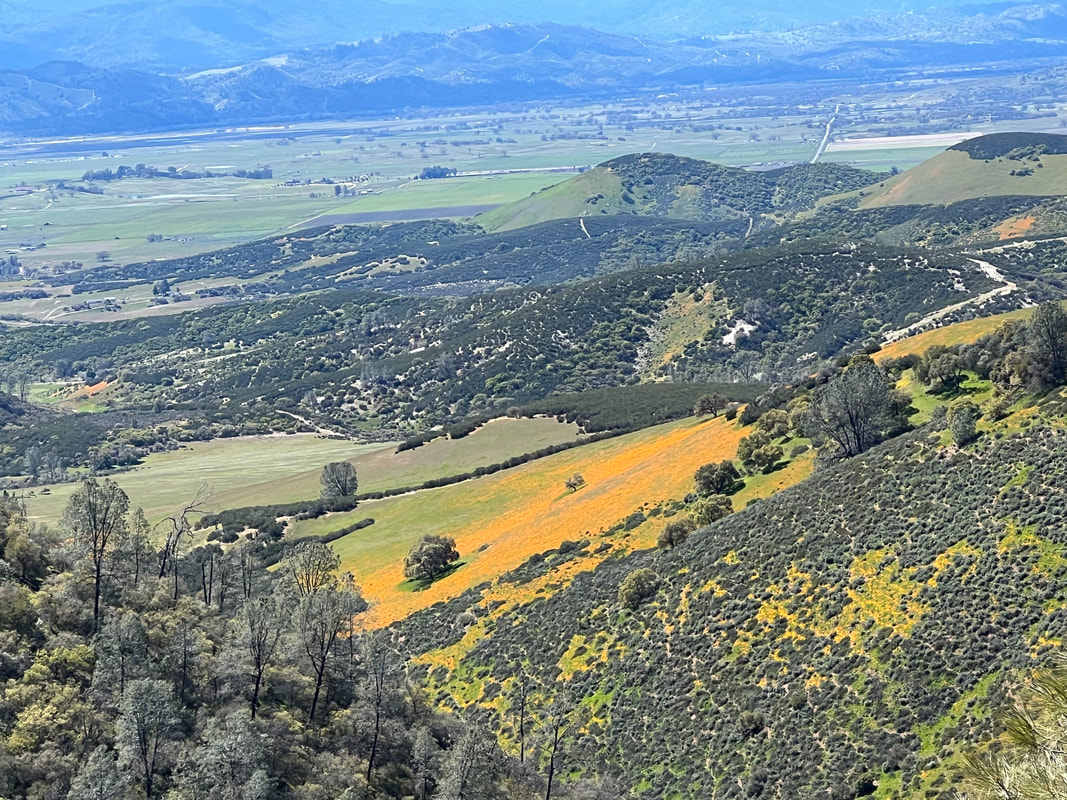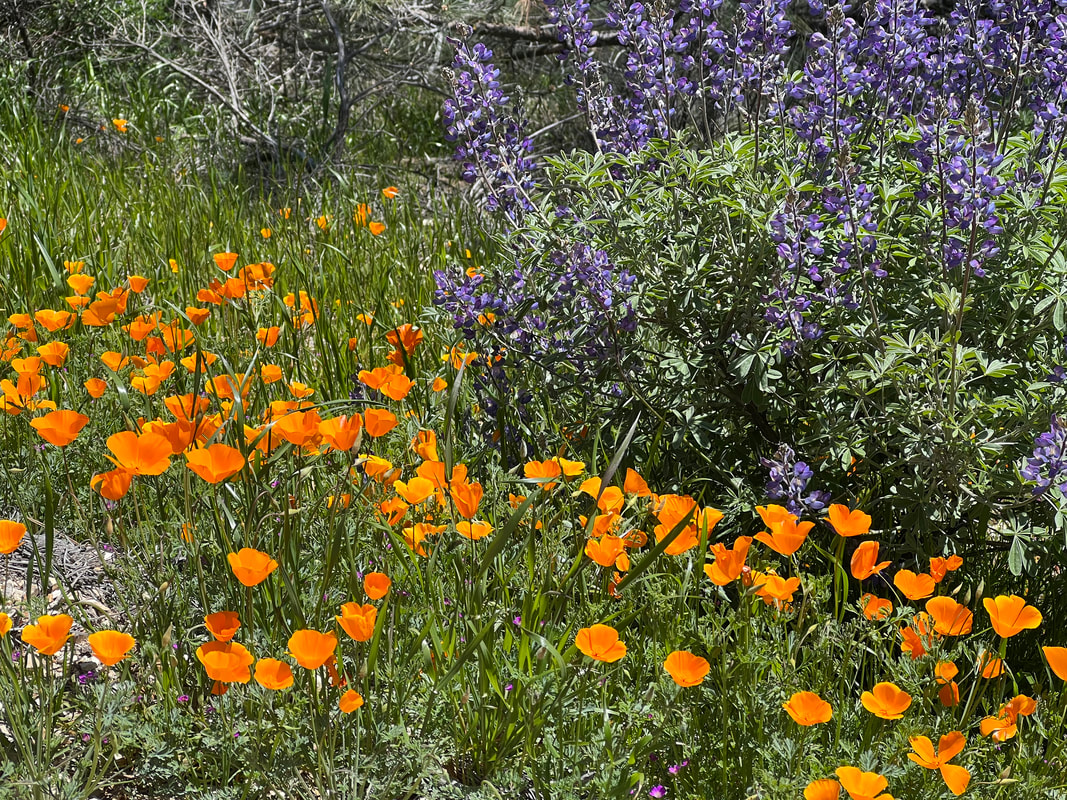The Condon Peak “campground” consists of six spacious sites with covered picnic tables, and is free after you get a $5 permit which is good for a week. We actually only had to pay $2.50 because the permits are half price for National Parks pass holders, but we figured we’d be generous and pay the whole $5 anyway. The campground is only about 35 miles from Pinnacles National Park, but most of those 35 miles are on a road that was washed out by the recent floods. We came in from the Coalinga direction, and while the road was under repair in a few places, it was paved and easily passable for our rig. When we got to the campground entrance, a “Road Closed” sign was set on the shoulder discouraging further travel towards Pinnacles, but since there had been periodic signs about road closures on the 22 miles from civilization to the campground, we decided to investigate that later.
One other overlander vehicle was already at the campground when we arrived, but since it was late in the day we just took the dogs for a quick walk and got the camper set up. In the morning, they were out of their camper, so Tom asked if they knew anything about road conditions towards Pinnacles. They were also wondering about the road, so Tom decided he’d take his motorbike and investigate. Tom and Austin started talking about it, and Tom invited Austin to ride my scooter, which was a huge win-win as far as I was concerned since Tom wouldn’t be going alone, and I wouldn’t have to go in the chilly weather, which was breezy with temperatures in the 40s. On their ride, they discovered that the road might be passible, if you don’t mind driving through a 2-foot flood about 30 feet wide. It started raining after the guys returned, and continued to rain - and snow! - off and on overnight and then into the morning, so we decided to go back the way we came and take the longer but more traveled route to Pinnacles when we left the campground. We spent another day at Condon Peak catching up on computer work, blogging, and reading, and mostly staying warm in the camper with the Buddy heater running while we waited for the rain and snow to let up so we could get out for a walk and enjoy the scenery.
We took off the next morning with the plan to head to Pinnacles with a stop in Coalinga for propane. Heading down the mountain from Condon Peak, we found that two days of rain had raised the creek levels, but the road was clear. Our first stop was an Ace Hardware, but we found that they didn’t have propane, and they directed us to a U-Haul place a few blocks away. Their propane tank was clearly placed at the edge of the street, so we pulled over and took the scooter off the back so Tom could get the tanks out for the shop owner to fill. We’re getting good at that, so it didn’t take long, and as we stood on the street chatting with the shop owner, we heard a loud hissing. Tom’s first thought was that the air bags on the suspension system were malfunctioning and deflating for some reason, so he ran around to the side to check that. As he was doing that, he realized that the hissing was coming from the inside dually. When we were in Huntington Beach, he had installed valve stem extensions so he didn’t have to take the outside tire off to do anything with the inside dually, and he realized that the air was leaking through a broken valve stem and the inside dually was flat. So, he jacked up the truck, took the tire off, and went for a “test drive” in a U-Haul with the shop owner to a tire shop just down the alley. They installed a new valve stem and pumped up the tire, and Tom came back and put it on the truck. As he was doing that, it occurred to him that if one of the tires with the new valve stems had this problem, the other probably did as well. So, after settling with the U-Haul guy for the propane, we drove the truck to the tire shop, where they removed the other inside dually and found that all the air had already leaked out of that tire. This was scary because our rig is heavy, with 10,000 pounds rear axle weight. Each tire is rated for 2,910 pounds, which means that with the four tires, we’re good for 11,640 pounds, which is more than the rear axle weight. But, when two of those tires are flat, the two remaining tires are only good for 5,820 pounds. That means we drove through Death Valley and drove twice through the mountain passes on severely stressed tires. We’re very lucky that we didn’t have a blowout on those roads, which is super scary because itty-bitty guardrails are all that keep you from going over a cliff. We’re also lucky that the hissing tire decided to hiss while we were standing in the street chatting, because otherwise we wouldn’t have known that the inside tires were flat. Tom does a pressure check once in a while, but not every time we drive, and since he’d done a pressure check when he installed the new valve stems in Huntington Beach, he hadn’t done it in Death Valley. Pressure checking all six tires has now been added to the visual walk-around we do every time we move.
With multiple hours spent diagnosing and fixing the tire problem, we abandoned plans to get to Pinnacles National Park. The guys at the tire shop kindly let us fill our water tanks, so with full propane tanks, full water tanks, and a little extra produce in the fridge, we looked for another free dry camping spot.
With multiple hours spent diagnosing and fixing the tire problem, we abandoned plans to get to Pinnacles National Park. The guys at the tire shop kindly let us fill our water tanks, so with full propane tanks, full water tanks, and a little extra produce in the fridge, we looked for another free dry camping spot.
All my apps recommended Williams Hill Recreation Area, which is about mid-way between Paso Robles and Pinnacles National Park. It’s closer to the coast than Condon Peak, and about 1000 feet lower in elevation, so we figured we might expect a few days without snow. Most of the reviews said the road in and out was a little rough, but a number of reviewers said they made it with rigs that were bigger than ours, not 4WD, and often towing trailers or cars, so we figured it was worth a try. The road is in fact a little rough, and is just a bulldozer track carved around the mountain, but it is well traveled, well maintained, and has enough wide spots that if two big rigs met, one or the other would be able to reverse to a wide spot without too much trauma. We didn’t meet anyone on the way up, and our truck had no trouble with the few minor washouts we encountered, and when we got to the top we were delighted to find a beautiful campground at the top of a hill, overlooking valleys on either side. Williams Hill is built much like Condon Peak, with 7 campsites, each with a picnic table pavilion and fire ring. Four of the sites overlook the valley on the sunset side, and two larger spots are at the end of the campground road and off to the side overlooking the valley on the sunrise side. We initially pulled into one of the sunset view sites, but the neighboring site already had a camper with a dog, so we ended up moving to the larger site at the end of the road to avoid excessive barking. Shortly after we moved, a car with tent campers pulled in, and they were delighted to take the sunset view site. We took the dogs for a walk on the roads that wind around the mountains, and by the time we got back to the campground to make dinner, only one of the seven sites was still available. Apparently lots of people know how nice this campground is, since it was 6/7ths full on a Thursday night in the winter.
As expected, the campground filled to overflowing on Friday night. Somebody pulled in next to us around 10:30pm, but apparently decided against it. Nobody was near us in the morning, but when Tom took the dogs out he said that all the overflow sites had at least three vehicles parked. The other thing the reviews had warned about is that there is a lot of shooting, which we weren’t sure whether or not to believe since we didn’t hear any shots on Thursday. However, we walked past some sites where we saw lots and lots of shells and shot up targets, so we knew the warnings were real. Sure enough, the pop-pop-popping started Friday afternoon, and picked up again in the morning. We’re planning to stay here over the weekend, so we’ll see what happens.

